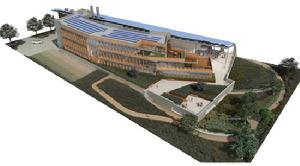簡介
今天,所有這些組織已成為一個大型的多學科的基因組為重點的組織。400名科學家,25萬平方英尺的空間實驗室,新JCVI的地點是在基因組研究居世界領先。
歷史
兩年多來博士奎格文特和他的研究小組已經在基因組研究的先鋒。革命開始於1991年在國立衛生研究院博士文特爾和他的團隊開發的表達序列標籤(ESTs),一種新技術,迅速地發現基因。博士文特爾和他的同事便開始非盈利研究機構的一種新的基因組研究所(TIGR)的研究所。隨著自由謀求任何令人興奮的途徑,在基因組學領域的一些新興的,團隊決定利用他們的新的計算和計算工具,以及新的DNA測序技術,序列的第一個免費活的有機體,在1995年流感嗜血桿菌。與此之前,基因組學的大門被打開。基因組研究所接著序列和分析超過50微生物基因組。博士文特爾和他的小組的一些進入哺乳動物的基因組測序和最重要的模式生物,包括果蠅,小鼠,大鼠一些。世界的注意力也許是最敏銳的測序和基因組分析的一個重點-人類-這是在2001年出版的博士文特爾和他的塞萊拉基因組。
在JCVI,我們並不滿足於吃老本。在過去三年,團隊一直在最激動人心的研究成果和一些生物科學。我們最近公布的第一個人類基因組二倍體和我們的全球海洋採樣探險隊發現了600多萬新的基因和從海水中發現新的蛋白質生物成千上萬個家庭的初步結果。各隊也測序人類環境中,如陰道,口腔和人的腸道微生物菌群。我們正在對我們尋求穩步前進創造一個染色體和生物合成成功地轉變成另一種細菌的種類。我們也測序,如蚊種,埃及伊蚊的重要傳染病的病原體種類,我們正在努力理解,如流感和我們尋求冠狀病毒基因組的幾個演變,以幫助減輕全球傳染病的禍害世界。這些只是眾多研究領域,是解決我們的團隊,我們力求使我們的科學與世界各地的影響數。
The J. Craig Venter Institute was formed in October 2006 through the merger of several affiliated and legacy organizations — The Institute for Genomic Research (TIGR) and The Center for the Advancement of Genomics (TCAG), The J. Craig Venter Science Foundation, The Joint Technology Center, and the Institute for Biological Energy Alternatives (IBEA). Today all these organizations have become one large multidisciplinary genomic-focused organization. With more than 400 scientists and staff, more than 250,000 square feet of laboratory space, and locations in Rockville, Maryland and San Diego, California, the new JCVI is a world leader in genomic research.
History
For more than two decades Dr. J. Craig Venter and his research teams have been pioneers in genomic research. The revolution began in 1991 when at the National Institutes of Health Dr. Venter and his team developed expressed sequence tags (ESTs), a new technique to rapidly discover genes. Dr. Venter and his colleagues then started a new kind of not for profit research institute, The Institute for Genomic Research (TIGR). With the freedom to pursue any number of exciting AVENUES in the burgeoning field of genomics, the team decided to use their new computing and computational tools, as well as new DNA sequencing technology, to sequence the first free living organism, Haemophilus influenzae in 1995. With this advance, the floodgates of genomics were opened. TIGR went on to sequence and analyze more than 50 microbial genomes. Dr. Venter and some from his team moved into mammalian genomics and sequenced some of the most important model organisms including the fruit fly, mouse and rat. The world’s attention was perhaps most keenly focused on the sequencing and analysis of one genome — the human — which was published in 2001 by Dr. Venter and his team at Celera Genomics.
At the JCVI, we’re not content to rest on our laurels. In the past three years teams have been engaged in some of the most fruitful and exciting research in the biological sciences. We’ve recently published the first diploid human genome and the initial results of our global ocean sampling expedition which uncovered more than six million new genes and thousands of new protein families from organisms found in sea water. Teams have also sequenced the microbial flora found in human environments such as the vagina, oral cavity and human gut. We’re making steady progress in our quest to create a synthetic chromosome and organism having successfully transformed one species of bacteria into another. We’ve also sequenced a variety of important infectious disease agents such as the mosquito species, Aedes aegypti, and we are working to understand the evolution of several viral genomes such as influenza and coronavirus in our quest to help alleviate the scourge of infectious disease around the world. These are just a few of the many research areas our team is tackling as we seek to make a worldwide impact with our science.

